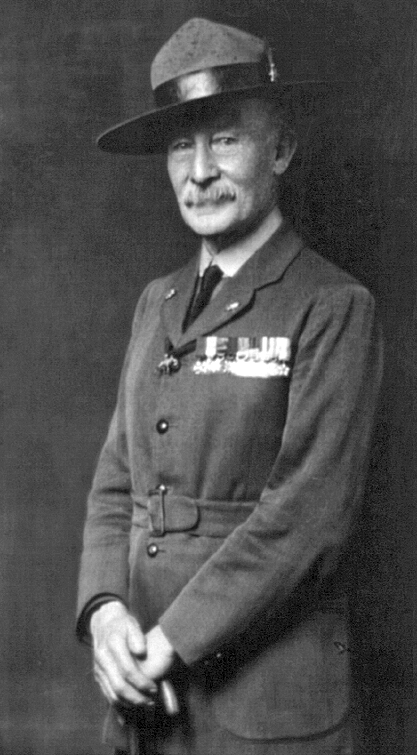Or: Thank You Lord Baden-Powell
 |
| Father of Scouting. Unwitting Re-Animator of the Sedentary |
Last April, I started running again after being forced to lay off for 11 months due to a really painful case of plantar fascitis. To prevent injury, I started easily, running a mere one mile a day. After having worked up to two miles, I pulled my calf muscle. Then I pulled it again. Then I pulled it again.
"Try fast walking instead of running to rehab the calf," I thought. So I did. Then I pulled a hamstring. While walking. Total humiliation. Despite my 40-plus running years, I learned one cannot jump-start a 58-year-old bod from zero and expect to be back in shape in a week.
Actually, I did know that. However, I am still surprised over how long everything takes at this age. It doesn't matter how many years I ran. When I'm forced to lay off and start from scratch it's like I never ran a step in my life.
Back in my day, (am I old enough to use that phrase?), our Scout Handbooks discussed Boy Scout Pace. The idea was to alternate running 50 paces (a pace being two strides) with walking 50 more. Good practitioners could travel 12 minutes a mile or five miles per hour for quite a long time. In a past article I wrote the minimum cardiovascular fitness for a successful, safe Mt Whitney climb was running a minimum of five miles in an hour for the month before the trip. That's not a coincidence.
 |
| Consultation Lake, Arc Pass, Mt McAdie, and Louie Malvaez (Charles Hirsch photo) |
By applying the principle behind Boy Scout Pace, I fiendishly devised a method for returning sedentary bodies back from the dead. The walking interval lowers the running intensity so the body can adapt at its own pace.
In practice there are a few different ways to apply the method. After awhile, counting paces drives me nuts. How about counting telephone poles instead? Or light poles? Or trees planted along a street? Or houses? What if you started by running two poles, then walking two? Then three and three? Then four and two? You can use the principle to put together larger and larger blocks of solid running.
Boy Scout pace also allows the trainee to stay out longer initially but with less intensity. So that one mile of running turns into a mile of running and a mile of walking broken into smaller parts. Eventually, you will run the whole distance, having strengthened your tendons and ligaments slowly instead of falling into a train-and-injury pattern.
I used this method to allow everything to get used to moving in concert again. I weaned myself off the walking parts slowly until I could run three or four miles (5 to 6.6 km) solidly. If I can run that far, I can run six miles (10 km)-plus. Eventually.
Thanks, Lord Bobby. Hello to the wife.
Like Mt Whitney Quest on Facebook
No comments:
Post a Comment
OK guys, let's keep 'er civil and mannerly. This is not a political site so diatribes of that ilk are not welcome and won't be published.